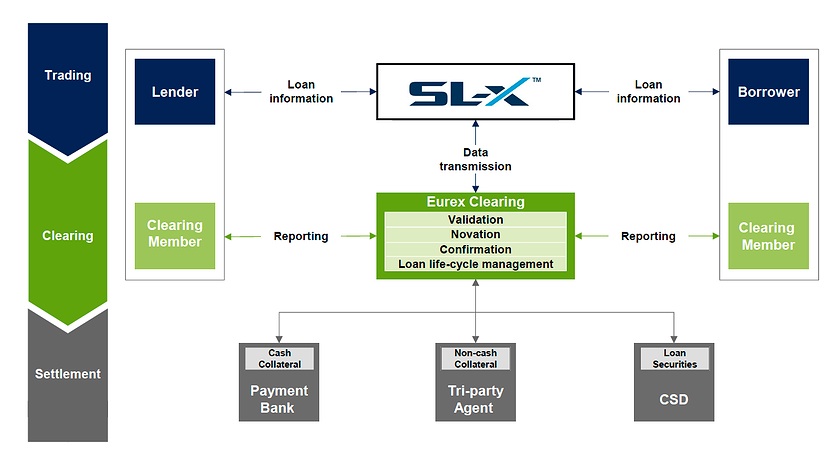An article in Securities Lending Times reported that SL-x, the securities lending electronic marketplace, closed after their funding was withdrawn. It is too bad.
SL-x objective was to create a trading venue that was then linked into Eurex for central clearing. From the Sept. 23, 2013 press release issued by Eurex and SL-x:
“…Eurex Clearing, one of the world’s leading clearing houses, and SL-x Trading Europe (SL-x) have signed an agreement whereby Eurex Clearing will act as clearing house for securities borrowing and lending (SBL) transactions executed via SL-x’s innovative and patents pending electronic trading platform…”
They also had a deal with Markit. From the SL-x / Markit press release dated Oct. 9, 2014
“…Markit customers who use the SL-x solution will have access to real time trading data from SL-x as well as their existing securities finance data and analytics from Markit. This covers USD14 trillion of securities in the lending programmes of over 20,000 institutional funds and provides a comprehensive view of short interest data and institutional fund activity across equities and fixed income spanning all market sectors…”
What was SL-x trying to do? From the SL-x website:
Unique Value Proposition
- Preserves current market relationships, without threatening existing revenue streams
- Free up regulatory capital and increased capital proposed under Basel III
- Increases operational efficiencies and cost savings for desks at both Agent Lender and Prime Brokers
- Expands the market and promotes greater volume growth for all market participants
- Facilitates product innovation
The website has a nice diagram of how everything fit together.
The idea of linking together a smart front-end with central clearing and securities lending data seemed pretty clever to us. CCPs in securities lending are not new – OCC and Eurex are out there– but the front end piece was missing. SL-x didn’t have a lot of traction, but it was early days. VC funding can be unforgiving.
Finadium’s May, 2014 report “Emerging Technologies in Securities Finance and Collateral Management” included a look at SL-x. From that report, authored by Josh Galper,
“…The CCP argument is particularly poignant. According to SL-x, the last five months have brought dramatic change in industry perceptions of capital costs, with action starting to be taken by first prime brokers, then agent lenders. SL-x principals note that there are “very few people who wouldn?t say they have a capital problem” with their bilateral transactions. Central clearing solves the majority of those problems. The big question now is what will happen if prime brokers want to centrally clear for economic reasons but agent lenders do not. SL-x believes that the CCP model will win out at least for a portion of the business; we heard similar sentiments from our panel members at the recent Finadium conference in New York. The company aims to offer a supporting tool to make CCP usage as easy as possible…”
So what will happen? Will either Markit or Eurex pick or the pieces and use their deeper pockets to make a go of it? Or maybe EquiLend will see value in the business model for a European offering, substituting their analytics for Markit and offering a centrally cleared solution? Likewise, Pirum could consider integrating their Gateway system — which already connects to Eurex – with SL-x’s front end trade negotiation capability. SL-x had some good ideas that shouldn’t entirely go to waste.
A quick update: SL-x has characterized the move as a restructuring, not necessarily a shut down. We wish them the best of luck.




1 Comment. Leave new
We note that Global Custodian ran a counter article on September 19, 2014, “SL-x Is Not Closing Shop, Plans to ‘Redeploy Capital Resources”
BY JAKE SAFANE
Earlier this week, SL-x applied to cancel its Financial Conduct Authority (FCA) authorization, though the company says that this was a voluntary request and that SL-x is not closing.
The article is behind the pay wall for those with a Global Custodian subscription. The link to the story is http://www.globalcustodian.com/Securities_Finance/SL-x_Is_Not_Closing_Shop__Plans_to__Redeploy_Capital_Resources_.aspx